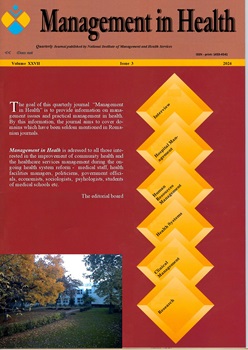Abstract
INTRODUCTION. Venous and lymphatic diseases are complex diseases
with a large clinical diversity, requiring hospital approach for surgical resolution
or homeostatic maintenance and balancing. Clinical management includes
effective and efficient non-invasive diagnostic and therapeutic procedures that
allow acute or chronic case resolution toward positive clinical outcomes, leading
to a significant increase in patients quality of life.
THE AIM of this article is to describe hospitalization patterns and to present
the current state of hospitalizations due to venous diseases and diseases of the
vessels and lymph nodes.
RESULTS. The pattern shows that of all patients hospitalized with venous
and lymphatic vessel and lymph node disease prevalent are females vs. males
(54% vs. 46%), with a mean age 54-59 years, urban vs. rural (54% vs. 46%),
admission being performed predominantly at GP’s referral, with an average
length of hospitalization of 4-5 days and treatment in wards with a surgical profile
(over 52%).
CONCLUSIONS. Venous and lymphatic vessel and lymph node disease is a
complex pathological entity with many specificities, and the treatment of these
pathologies is carried out in various clinics and departments of hospitals. The
evidence provided in this paper can be used to assess the current status of venous
and lymphatic pathology case management in Romanian hospital units.
The gathering of clinical, administrative or financial data on hospitalised
morbidity due to venous and lymphatic diseases needs to be continued and
complemented by in-depth, detailed research on relevant issues that can sustain
policy and strategic decision-making in the field of phlebology, an area that
deserves much more extensive attention from policy makers, researchers and
other stakeholders.

